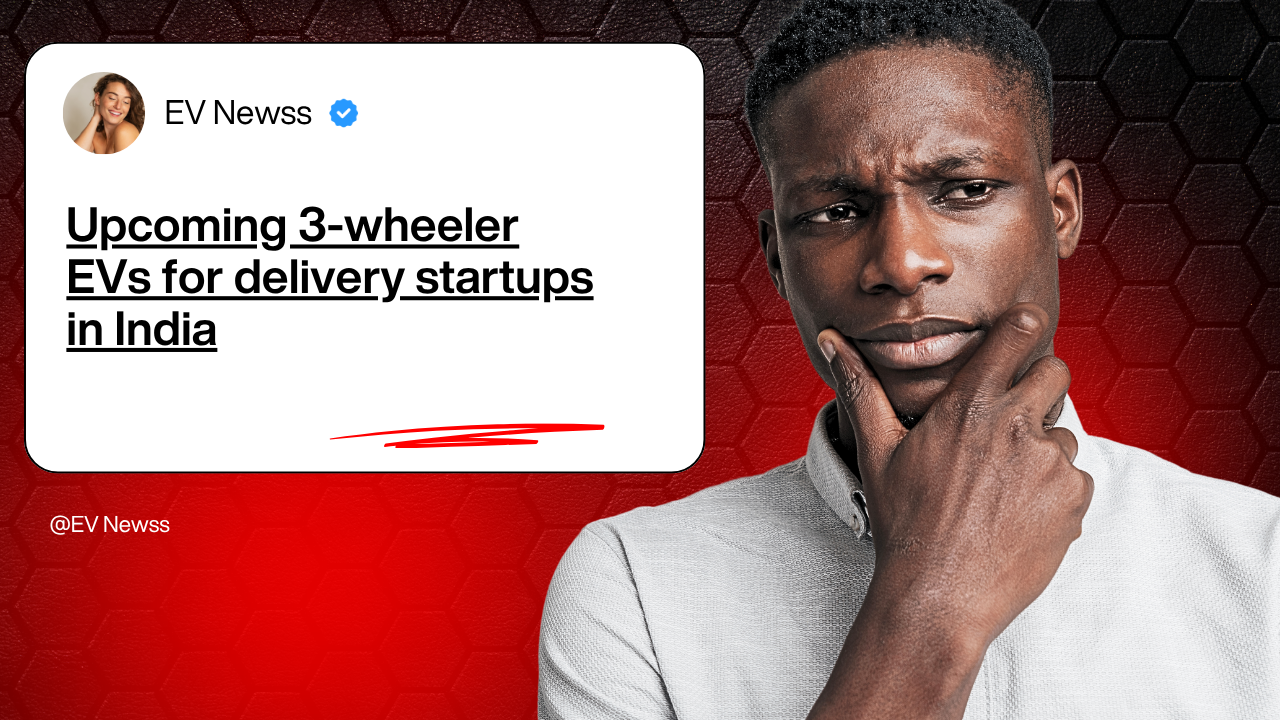India’s logistics and hyperlocal delivery sectors are undergoing a silent yet significant transformation. At the center of this evolution are 3-wheeler electric vehicles (EVs)—vehicles that are proving to be game-changers for last-mile delivery startups. With fuel prices remaining volatile and emission norms becoming stricter, delivery fleets are embracing EVs not just for their sustainability, but for their cost-effectiveness, reliability, and adaptability.
This article takes a detailed look at the upcoming 3-wheeler EV models in 2025 and beyond that are specifically designed to cater to India’s delivery ecosystem.
Why 3-Wheeler EVs Are Gaining Momentum in Delivery Startups
1. Lower Operating Costs
Compared to petrol or diesel cargo vehicles, 3-wheeler EVs offer dramatic reductions in:
- Fuel costs (electricity is 70–80% cheaper per km)
- Maintenance (fewer moving parts)
- Total Cost of Ownership (TCO)
2. Government Incentives
Under FAME-II and state EV policies, 3-wheelers get sizable subsidies, tax exemptions, and registration benefits.
3. Suitable for Urban Deliveries
These EVs are ideal for:
- E-commerce parcel deliveries
- Grocery & kirana delivery
- Food logistics
- D2C product movement in cities
Upcoming 3-Wheeler EVs to Watch in 2025
1. Mahindra Zor Grand (Upgraded Version)
- Launch: Q3 2025
- Payload: Up to 550 kg
- Range: 120–150 km per charge
- Battery: Swappable lithium-ion
- Special Feature: Smart telematics, GPS, and cloud connectivity
- Best for: E-commerce and heavy-duty last-mile logistics
2. Piaggio Ape E-Xtra FX Max
- Expected Launch: Late 2025
- Payload: 600 kg
- Range: 110 km
- Battery: 8 kWh lithium-ion (fixed)
- Unique Selling Point: Metal body, higher torque, and sturdy build for urban load-bearing use
3. Euler Motors HiLoad EV 2025 Edition
- Expected Launch: Mid 2025
- Payload: 688 kg (highest in category)
- Range: 140–160 km
- Charging Time: ~4 hours (fast charging support)
- USP: Built specifically for Indian roads and weather conditions
- Ideal For: High-density city deliveries
4. OSM Rage+ Rapid EV (Updated Model)
- Expected Launch: Q4 2025
- Payload: 550 kg
- Charging Time: Under 35 minutes
- Range: 90–100 km
- Battery: Swappable
- Standout Feature: Designed for quick turnaround and high fleet utilization
5. Altigreen Neev Low Deck
- Launch Window: Mid-to-late 2025
- Payload: 550 kg
- Range: 110–120 km
- USP: Wider cargo space and designed for e-grocery use
- Highlight: Already being tested by BigBasket and Flipkart fleets
What Delivery Startups Should Look for in a 3-Wheeler EV
- Payload Capacity – Minimum 500 kg for urban deliveries
- Range Per Charge – At least 100 km to cover full shift
- Charging Infrastructure Compatibility – Fast charging or battery swapping options
- Connectivity Features – GPS, fleet tracking, IoT sensors
- Warranty & After-Sales Service – Nationwide support network
- Ease of Financing – NBFC or OEM tie-ups for leasing/fleet loans
Government Support for 3-Wheeler EV Adoption
- FAME-II Scheme: Offers subsidies up to ₹50,000 for electric 3-wheelers
- State EV Policies (Delhi, Maharashtra, Telangana, Tamil Nadu):
- Additional subsidies
- Scrappage incentives
- Free registration and road tax exemptions
- Battery Swapping Framework 2025: Expected to boost deployment across delivery fleets
Challenges Still Facing Adoption
- Charging Infrastructure: Inadequate public charging and swapping stations in Tier-2 and Tier-3 cities
- Battery Replacement Costs: Still a major concern post-warranty
- Lack of Trained Service Staff: Especially in remote areas
- Range Anxiety Among New Operators: Which leads to reluctance in adopting EV fleets
Top Delivery Startups Driving EV Deployment in India
- Zomato – Targets 100% EV-based fleet by 2030
- Flipkart – Partnering with Hero Electric and Mahindra for last-mile
- Amazon India – Already using over 3,000 EVs in 2024, planning to expand
- BigBasket – Investing in Altigreen and Euler fleet solutions
- Zepto, Dunzo, Blinkit – Piloting multiple EV types for urban delivery
FAQs – 3-Wheeler EVs for Delivery Startups
Q1. Which is the best electric 3-wheeler for delivery in 2025? Euler HiLoad 2025 and Mahindra Zor Grand (updated) lead in payload and range.
Q2. Are there battery swapping options in upcoming EVs? Yes, models from Mahindra, OSM, and Piaggio are incorporating swappable tech.
Q3. What are the government subsidies available? Under FAME-II, subsidies range from ₹35,000–₹50,000. State incentives are extra.
Q4. Can startups lease 3-wheeler EVs instead of buying? Yes, many OEMs like Euler and Altigreen offer leasing/EMI options via fintech/NBFC tie-ups.
Q5. Are electric 3-wheelers suitable for Tier-2 cities? Absolutely. Their lower running cost and compact size make them ideal for congested, short-distance urban areas.
Final Thoughts: The Future of Last-Mile Delivery Is Electric
As India aims for 30% EV penetration by 2030, 3-wheeler electric vehicles will play a pivotal role in transforming last-mile logistics. For delivery startups, the upcoming lineup offers promising advancements in range, payload, and reliability—paving the way for efficient, eco-friendly urban distribution.
Whether you’re a logistics aggregator, a fleet owner, or a founder of a delivery startup, now is the perfect time to explore the advantages of EVs. The 3-wheeler revolution is not coming—it’s already here.
